Review for Thirteen Days
Introduction
You wait for one movie about the Cuban Missile Crisis, and two turn up together. Of course that’s just the way the Blu-rays ended up in my to-watch pile, and when you come down to it, you can’t really get two more different films than this and X-Men First Class. That’s a comic book action movie that re-wrote the events of the Cuban Missile Crisis of October 1962 to inform an epic tale of mutants with super-powers. The real Cuban Missile Crisis was about Superpowers too, the United States of America and the Union of Soviet Socialist Republics. For two weeks, the world was poised on the brink of nuclear Armageddon, a true war to end all wars. Thirteen Days tells that true story from the point of view of John F. Kennedy’s political advisor Kenneth O’Donnell, and thanks to Kennedy’s insistence of making audio tape recordings of the important meetings during that crisis, it has a greater than expected degree of authenticity in its dramatization. And you know, of the two films, it’s the historical docudrama that offers more gripping, edge of the seat thrills than the summer blockbuster.
In October 1962, the biggest problem that the Kennedy administration faced was the forthcoming mid-term elections. Then a U2 spy plane over Cuba took some very unsettling footage. The Soviet Union was stationing nuclear missiles on the newly Communist island nation, missiles that would be in striking distance of nearly every city in the United States. That was something that the US Government could not countenance. President Kennedy convened the security council, a set of key military and civilian advisors to decide how to respond to the situation. The EXCOMM meetings were recorded, which informs the events portrayed in this film. In an administration coming in on the heels of the McCarthy era, with war-hawk advisors keen to rattle a sabre or two at the Soviets, the challenge was how to prepare for war, without making the first misstep that would guarantee war.
It’s odd when you catch the hind end of a movie on television, broadcast in HD, have your interest piqued, and you pop to the local Internet retailer only to find the movie hasn’t been released on Blu-ray in the UK. Thirteen Days is currently available as an import release, although the US disc is Region B compatible.
Picture
Thirteen Days is presented in 1.78:1 widescreen 1080p. Other than the stock footage, which is as variable as you would expect, the image itself is clean, detailed and presented without significant flaw on this disc. As per the film’s design, footage varies between colour and monochrome, and either way is presented with clarity and light film grain. The period detail shows up well, as the sixties are recreated with the kind of attention that will have goof-nuts eagerly seeking out anachronisms. The production design is excellent, as are the costumes, and the film is very agreeable to watch. The only flaw would be some slight banding in effects scenes, usually in skies around the U2 over-flights.
Sound
The sole audio track on this disc is a DTS-HD MA 5.1 Surround English track, with optional HOH English, and Latin Spanish subtitles. It’s a dialogue focused film, but the surrounds are put to use when surveillance jets enter the fray. Now I know how Americans can be so immune to dodgy English accents in their films. A lot of criticism was applied to Kevin Costner’s Boston accent. As someone who isn’t that well versed in the nuances of regional US dialects, it was fine by me. But I did find the subtitles oddly necessary. It’s surprising how much colloquial speech has changed in 50 years, leading me to skip back and ensure that, yes, they did actually say that. Now what does it mean?
Extras
That question actually does get answered in some of the extras on this disc, of which there are many, although mostly repeating those on the DVD release.
The disc is presented in the thinner US Blu-ray Amaray style packaging, although I did get one of those eco-cases with bits cut out front and back to save on plastic, and to ease the passage of dust onto the disc.
The Filmmaker commentary is something of a patchwork track, although most of the contributors are together for the recording, including director Roger Donaldson, writer David Self, and Producer Mike DeLuca. Interjections are added from star Kevin Costner and others. It’s a very useful, detailed and informative commentary.
The Historical Information Track is a subtitle track that again is a useful addition that expounds on many of the characters and situations in the film, as well as explaining some of the passing references that they make.
The Historical Figures Commentary is another treasure trove of information, beginning with a speech on the perils of nuclear proliferation from Kennedy, and with interjections and analysis from academics, historians, and participants, as well as contemporary audio from the period in question.
These three things put together are reason enough to watch the film at least three times, if not four. It’s all fascinating and informative stuff.
Behind the Scenes: Historical Figures Biographies offers little sound-bites to introduce the key figures in the real life Cuban Missile Crisis, beginning with John F. Kennedy and Nikita Khrushchev, and working down the list of advisors, diplomats, military chiefs, to press secretaries. Incidentally, Kennedy’s press secretary Pierre Salinger is the only one actually interviewed. There are 17 biographies in total, with a complete runtime of just under 29 minutes, although there is no Play All option.
Behind the Scenes: Roots of the Cuban Missile Crisis is a 49 minute documentary on the events of 1962, and the causal factors stretching back to World War 2, beginning with the divvying up of Europe between East and West in 1945. It’s a fantastic documentary and well worth watching, a great companion piece to the film.
Behind the Scenes: Bringing History to the Silver Screen is an 11 minute making of featurette, the usual EPK piece with interviews with the cast and crew.
Behind the Scenes: Visual Effects would have been the multi-angle featurette on the DVD, here you get all the angles of the creation of the Crusader reconnaissance flyby as separate video streams on this disc, preceded by an Introduction by Visual Effects Supervisor Micheal McAlister.
There are 9 Deleted Scenes on this disc running to 13 minutes, and you can watch them again with audio commentary from director Roger Donaldson.
Finally there is the theatrical trailer on the disc.
All of the extra material except the commentaries is presented in 480i SD.
Conclusion
It actually happened! Fifty years after the fact, it’s hard to imagine now just how close we came to the end of the world through nuclear annihilation, but for two weeks in 1962, we were just one misstep away from the end of it all. The drama of the situation speaks for itself, but you wouldn’t be surprised if there was a little Hollywood artistic liberty applied to create a little extra. But the source material for much of this film comes from audio tapes secretly recorded by the Kennedys during those tense EXCOMM meetings. Other than a little compression applied to fit thirteen days into two hours, this film really does purport to tell it how it actually happened, and it really is edge of the seat thrilling, the stuff of nightmares.
The impressive thing is that it’s the characters, the dialogue, and the recreations of the pivotal meetings that are the strengths of this film. It’s about the most powerful men in the world, sitting around a table, trying to figure out how to prevent war, or if necessary prosecute a war that holds the attention. The cutaways to reconnaissance flights or engineers hard at work constructing missile sites in Cuba, and even intelligence analysts poring over grainy photographs tend to serve as a breather, and defuse tension. The only missteps are the constant use of mushroom clouds to emphasise the severity of the situation, redundant after the film’s opening, and the filmmakers’ intent to capture the Kennedys in iconic photographic poses every so often. These serve as minor distractions from the story.
Of course the key thing in a film like this is getting the characters right, and given that John F. Kennedy was the first TV president, and both he and his brother Bobby were so captured and recorded by the world’s media, you have to be spot on with the casting. They really lucked out in Thirteen Days with Bruce Greenwood and Steven Culp, who are uncanny as the Kennedy brothers, creating characters without becoming caricatures, and capturing their essences without creating impersonations. It’s when you take a look at the historical profiles in the extras that you see that the rest of the cast also strongly resemble the actual historical characters they play. It’s only Kevin Costner who bears little resemblance to the real Kenny O’Donnell, but his role is very much that of a viewer proxy. While Kenny O’Donnell was a central part of the Kennedy administration, in this film he serves as our eyes into the situation, asking the questions that we want answered.
I often lament the state of Hollywood, get jaded by the constant influx of summer blockbusters, roll my eyes at the overuse of clichés, the sudden earnestness of the sort that only comes during awards season, and then a film like Thirteen Days comes along, which restores my faith in the US film industry, reminds me that filmmakers can still, and indeed do create films with meaning, depth and intelligence, films that do have something important to impart to future generations. Thirteen Days was made in 2000, a reminder of an event where a country actually obtained WMDs and set them within immediate striking range of US soil, and in the tense stand-off that followed, those WMDs wound up removed through a combination of military threat and intense diplomacy. No nations were invaded, and no regimes were changed. Maybe if certain world leaders had taken that example to heart just three years later, the world would be a very different place to what it is today.
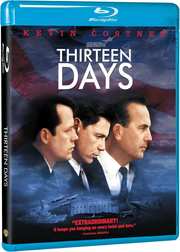

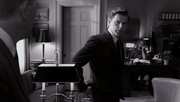

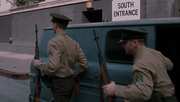
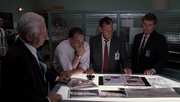
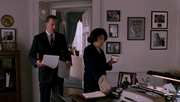
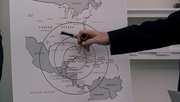

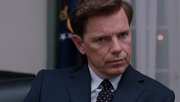

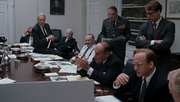
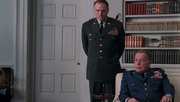
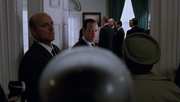

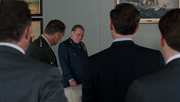

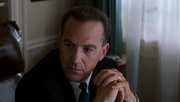
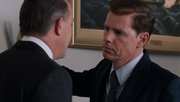
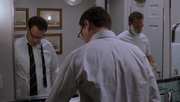
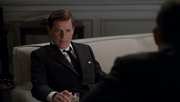
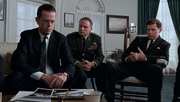
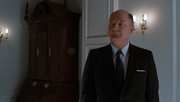
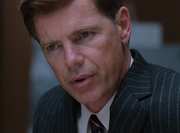
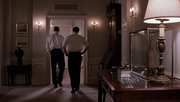
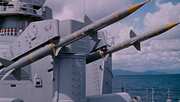

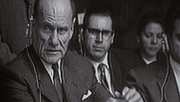
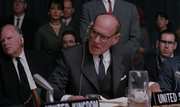
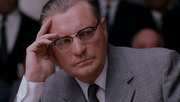













































Your Opinions and Comments
Be the first to post a comment!